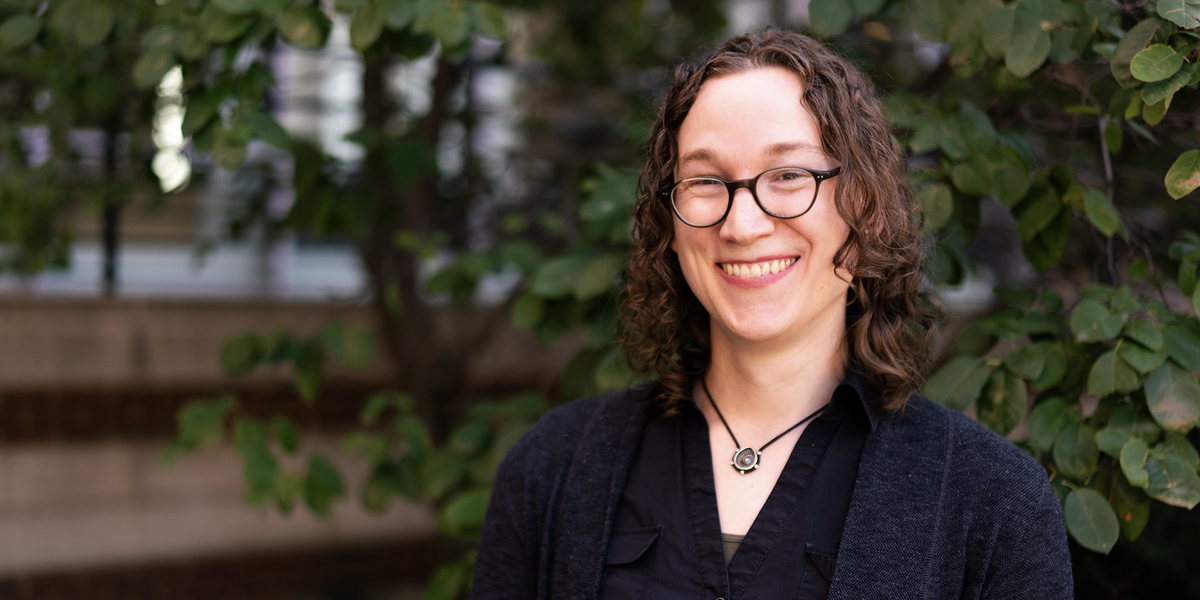
Concerned by the wave of anti-transgender legislation across the country and looking for a way to respond to those eager to support transgender colleagues in the scientific community, Lexy von Diezmann decided to connect the dots. Then a postdoctoral researcher at the University of Utah, now a member of the CBS faculty, von Diezmann reached out to an editor at Cell along with trusted colleagues across the sciences from 11 countries with the idea to develop a commentary. Their collective effort to raise the visibility of issues faced by transgender scientists resulted in an article – “Rigorous science demands support for transgender scientists” – published in a special sex and gender issue of the journal Cell earlier this spring, which provides background on the history of marginalization experienced by transgender people in society at large and within the sciences. The commentary also points out ways to make science and academia more inclusive.
Ultimately, von Diezmann is motivated by a broader vision of inclusion. "Marginalization of those who do not fit the binary norms of sex and gender intersects with and amplifies social structures such as sexism, racism and ableism," she says. "Resisting it requires solidarity." She shares her thoughts below on the commentary.
The commentary covers a lot of ground from the historic exclusion of transgender people broadly to the challenges transgender people in academia face specifically. If you were to choose a few takeaways you most want people to come away with, what would they be?
People who live outside binary, sex-assigned gender identities have been around forever - across history, across cultures, across continents. I think it is important to recognize that given current reactions to trans people becoming more visible in the 21st century. Being able to continue this progress and overcome discrimination depends a great deal on support from our institutions because they ultimately have the power to define how trans people should be understood and treated. Academia has an important role to play in promoting understanding, but transgender scientists and scholars remain a disproportionately small minority. Working in academia is challenging and because of historic discrimination against trans people, people like us are rare here. When transgender people do not get the support they need to thrive within academia, we lose valuable perspectives.
Where institutions are concerned, the commentary talks about being intentional about creating gender-inclusive spaces. Can you expand on that?
Having facilities that are gender-neutral such as bathrooms or housing on campus, at conferences, at field stations, is one important step. We're also grappling with how to bring together the larger national and international community when so many places are becoming unsafe. Being aware of these issues and implementing interventions that are appropriate for a given locale is helpful. Listening to the people affected is key.
The commentary notes the need for a high level of rigor, ethics and inclusion in research relating to sex and gender. As a scientist, what are some ways you see that researchers can ensure their work embodies these qualities?
I suggest looking at some of the work cited in the commentary and exploring the rest of the Cell special issue on sex and gender, which does a good job of getting into these questions. One thing that I think helps is to maintain a curious, assumptions-free mindset. For example, I work with a little nematode called C. elegans, which has two sexes – but they’re hermaphrodite and male. While there’s often an assumption when talking about reproduction that there are singular “male" and “female” germ lines, considering variation outside those categories offers some exciting questions. For instance, we can study how sperm cell development is regulated differently in those two sexes, and how the ability to self-fertilize changes the rules of evolution and adaptation. How cool is that?
In general, I’m excited by a trend we’re seeing now in both science and medicine that moves away from an essentialized binary toward a more multi-dimensional way of defining and analyzing sex and gender. This new approach aims to understand the distinct effects of factors like genetics, hormones and environment. When we look at this heterogeneity and underlying variability in sex and how it's expressed and how, in fact, fluid it is, it enables us to do new kinds of science and understand biomedical mechanisms with a clarity and precision that we couldn’t before.
Diezmann joined the College’s Department of Genetics Cell Biology and Development in 2023. Read more about her research into DNA repair.
— Stephanie Xenos